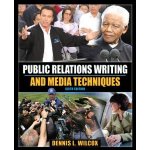A Look into the World of SMNRs
A social media news release (SMNR) serves as an effective online media communications tool that is essential to every public relations practitioner. It is a more extensive version of the traditional news release.
The Social Media News Release is a press release format created for the online media realm. The press release is said to be written with only the “press” in mind, however, your story needs to be told in a format that is appropriate for a variety of people including bloggers, journalists, publishers and the internet world.
Realwire.com quotes, “The SMNR is also designed with the community nature of the online world in mind so it can be shared and commented on in social bookmarking, micro blogging and social networking communities.”
The SMNR does not have many disadvantages other than its struggle to create. There are many bells and whistles (images, video clips) incorporated and one must have certain technological skills to complete the task of creating one.
The subject matter of the SMNR can either be broken down so that the main facts, quotes, contact details and boilerplate are all individually separated to allow users to disseminate the different elements or it could be fashioned in the “traditional” narrative style. All the while, SMNRs go well beyond the written word.
6 Tips I received from http://socialtraining.wetpaint.com/page to implore into your writing when creating a social media news release go as follows:
- Provide a brief description of what the announcement is, but leave the spin to the journalists. The journalists are going to go with their own spin on the story anyway, so why bother? Keep it straightforward rather than “spintastic”.
- Provide a page of quotes from the CEO or other C-level execs.
- Provide a page of quotes from customers, if applicable.
- Provide a page of quotes from analysts, if applicable.
- Provide financial information in many different formats.
- Provide many links inside the press release copy, and also provide a whole page of relevant links to other news stories or reference sources.
The release can be company branded and should contain images, audio and video (including embedded social media video such as YouTube) as well as navigation hyperlinks to applicable websites and coverage of online conversation results. The links should include various references, company websites, and/or background information. The audio, images and multimedia videos can be shared directly through Twitter, Facebook, E-mail, etc.
Like all press releases, it is the content of your story that is most important. Making certain the content is directed at the right demographic also holds key importance. However, the coverage analysis from http://www.realwire.com/servicesSMNR.asp suggests that layout use can support in the achievement. The website reveals this variable can yield around twice the editorial exposure and up to four times as much coverage for blogs, encouraging clients to utilize greater creativity in their storytelling.
Upon creating a social media news release, it is important that you find a strong foundation from which to launch your release. Doing so will provide you with a better overall SMNR and the more popular the platform, the more credit your SMNR may receive. Two gateways I recommend are PitchEngine.com and PRXbuilder.com.
When writing the release you must include the fundamental elements: “Who, What, Where and When” for the event, product, etc. that you are promoting. Even though the social media news release involves interactive features that draw in the attention of the audience, those features will not cover up a flawed and poorly written release. Like previously stated, content is key.
After identifying the essential information, comes the “fun” part in which you will enhance the online platform. You should try to direct viewers to your site or to related articles using hyperlinks, including your social contact information.
SMNRs allow for supplementary information and resources for readers to interact with as well as information that is relevant and/or helpful to them. These features allow for better search results, easy sharing, and greater viral conversation.
You can learn more about how to write a proper SMNR at http://technorati.com/blogging/article/how-to-write-a-social-media.
You can view a SMNR that was created for IBM at http://www.marketwire.com/press-release/IBM-Tackles-Global-Energy-Crisis-NYSE-IBM-867136.htm









